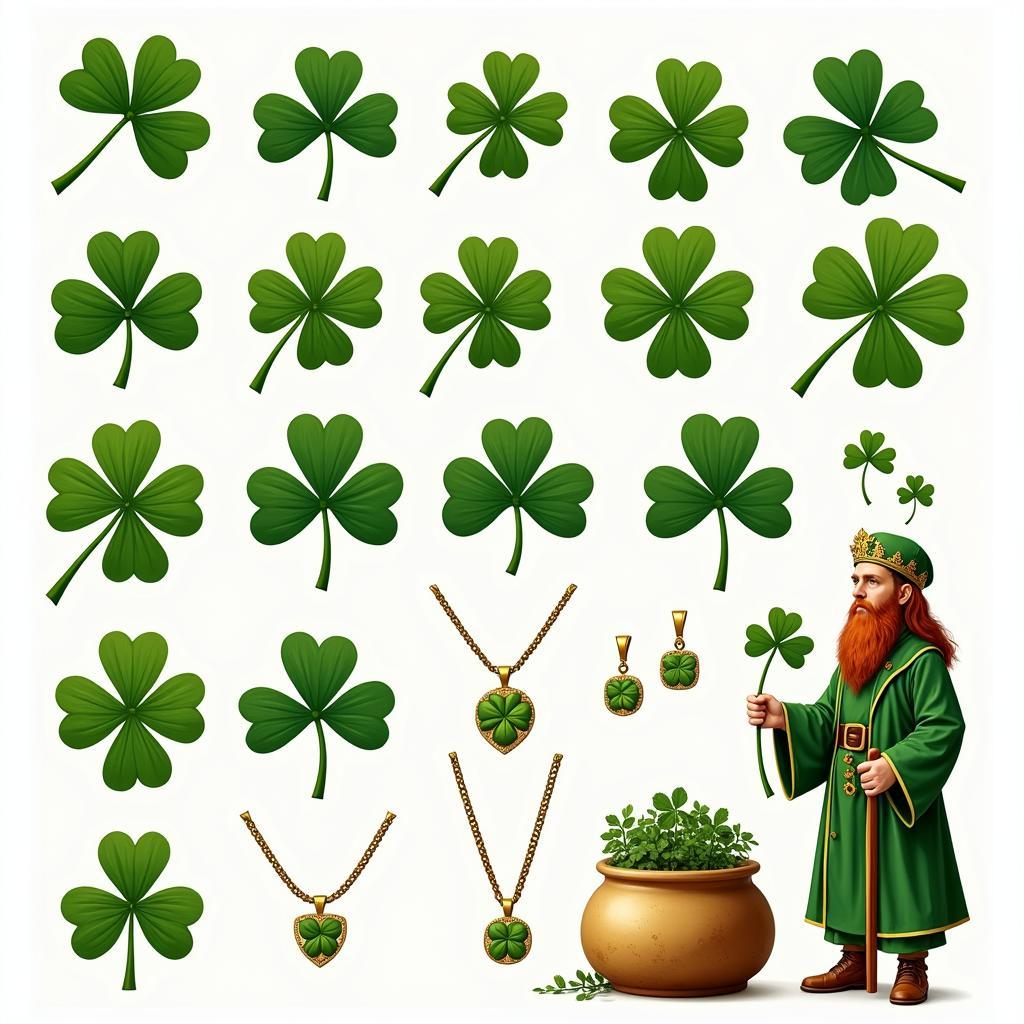St. Patrick’s Day, a celebration of Irish heritage and culture, is often associated with the color green. But what was the first color associated with St. Patrick’s Day? The answer may surprise you. This article delves into the history of the holiday and the evolution of its symbolic colors, exploring the fascinating shift from blue to the now ubiquitous green.
The Surprisingly Blue Beginnings of St. Patrick’s Day
For centuries, the color most closely linked to St. Patrick wasn’t green, but blue. Specifically, a light shade known as “St. Patrick’s blue.” This association stemmed from the Order of St. Patrick, an order of chivalry established in 1783 by King George III. The official robes of the order were a sky blue, and this hue became synonymous with Ireland’s patron saint. Early depictions of St. Patrick often show him wearing blue vestments. This association with blue is reflected in historical flags, artwork, and even early celebrations of St. Patrick’s Day.
The Green Revolution: How Green Took Over
So, how did green become the dominant color of St. Patrick’s Day? The shift began in the late 18th and early 19th centuries, fueled by growing Irish nationalism. Green, representing the lush landscapes of the Emerald Isle and the shamrock, a symbol adopted by St. Patrick to explain the Holy Trinity, became a powerful emblem of Irish identity and the fight for independence. The shamrock, in particular, became a potent visual symbol, further cementing green’s association with the holiday.
 Shamrock as a Symbol of St. Patrick's Day
Shamrock as a Symbol of St. Patrick's Day
The Role of the Shamrock
The shamrock, a three-leaf clover, became intrinsically linked with St. Patrick and the holiday. Legend has it that St. Patrick used the shamrock to explain the concept of the Holy Trinity – the Father, the Son, and the Holy Spirit – to the pagan Irish. This simple, yet profound, visual aid helped convert many to Christianity. As the shamrock became a national symbol of Ireland, so too did its color: green.
St. Patrick’s Day Today: A Sea of Green
Today, green reigns supreme on St. Patrick’s Day. From clothing and decorations to food and drink, green is everywhere. The wearing of the “green” has become a global tradition, a visual celebration of Irish heritage. Even those with no Irish ancestry participate in the festivities, donning green attire and enjoying the lively atmosphere.
Why is green so popular now?
The popularity of green is a testament to the power of symbolism and cultural identity. Green represents not only the beauty of Ireland but also the spirit of its people: resilient, vibrant, and proud.
Conclusion: From Blue to Green, a Colorful History
The journey of color association with St. Patrick’s Day is a fascinating reflection of evolving cultural identities and historical shifts. While blue held its place for centuries, green ultimately triumphed, solidifying its position as the definitive color of St. Patrick’s Day, a vibrant symbol of Irish pride and heritage. What was the first color associated with St. Patrick’s Day? Blue. What color is it now? Undeniably green.
FAQ
-
What does the shamrock represent? The shamrock represents the Holy Trinity in Christianity and is a national symbol of Ireland.
-
When did green become associated with St. Patrick’s Day? The association with green became prominent in the late 18th and early 19th centuries.
-
What color represents march? Find out here: what color represents march
-
Why do people wear green on St. Patrick’s Day? Wearing green is a way to celebrate Irish heritage and participate in the festive spirit of the holiday.
-
What was the Order of St. Patrick? The Order of St. Patrick was an order of chivalry established in 1783, whose robes were St. Patrick’s blue.
-
Is blue still used in any St. Patrick’s Day celebrations? While less common, some traditionalists still incorporate blue into their celebrations.
-
What are some other symbols associated with St. Patrick’s Day besides the shamrock? Leprechauns, pots of gold, and Celtic crosses are also common symbols.
Scenarios and Questions:
Scenario 1: Someone asks you, “Why is St. Patrick’s Day associated with green?” You can explain the historical shift from blue and the significance of the shamrock and Irish nationalism.
Scenario 2: You see someone wearing blue on St. Patrick’s Day. This could be a chance to share the history of St. Patrick’s blue and its connection to the Order of St. Patrick.
Further Questions: What other colors have been associated with Ireland throughout history? How have different symbols of Ireland evolved over time?
Need help choosing the perfect green for your St. Patrick’s Day celebration?
Contact us! Call: 0373298888, Email: [email protected] or visit us at 86 Cầu Giấy, Hà Nội. We have a 24/7 customer service team ready to assist you.

